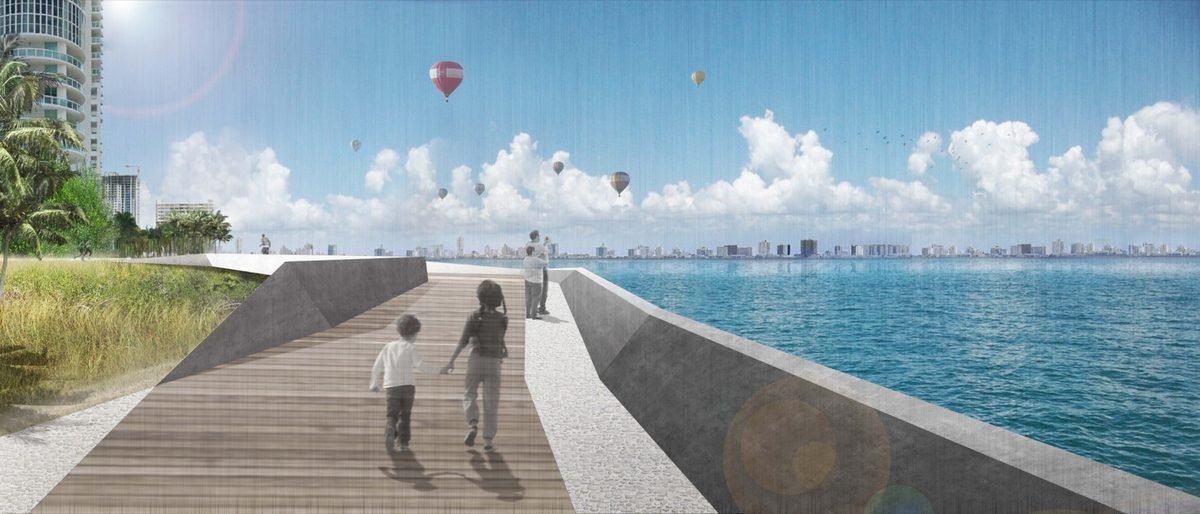Biscayne Line – Miami’s Future Baywalk

Biscayne Line, which was initially limited to a small section of Edgewater, now encompasses a total of thirteen miles. This development is envisioned to run seven miles along Biscayne Bay, from the Julia Tuttle to the Rickenbacker Causeway, and an additional five miles along the Miami River. The baywalk will snake in front of many of the existing condos featured by Brickell.com, as well as those in the pre-construction phase, such as Echo Brickell. The pathway will connect all the existing public areas, set aside by the 1979 law, and bypass private spaces, which were established prior to the law, via floating docks, due to Miami’s ownership of the water.
This project, which was conceptualized and drafted at The University of Miami School of Architecture, is now being spearheaded by Carlos Rosso of The Related Group, District Two City Commissioner Marc Sarnoff, and architect Bernardo Fort-Brescia of Arquitectonica. The three hold that Biscayne Line, which will be funded by The Related Group, will increase the value of land adjacent to the development as well as help connect the city via the underutilized-waterfront spaces. “Here we have beauty, which is the geography of Biscayne Bay. Logic says that we should take advantage of it and not separate ourselves from it. The most important message from our city is this bay and the connection with the water. To not try to experience that amazing dimension that we have is a pity,” says Fort-Brescia. Additionally, they claim that public security is another included benefit, as they intend to use the developers’ ad valorem tax dollars to fund the policing of the thirteen mile walkway.

